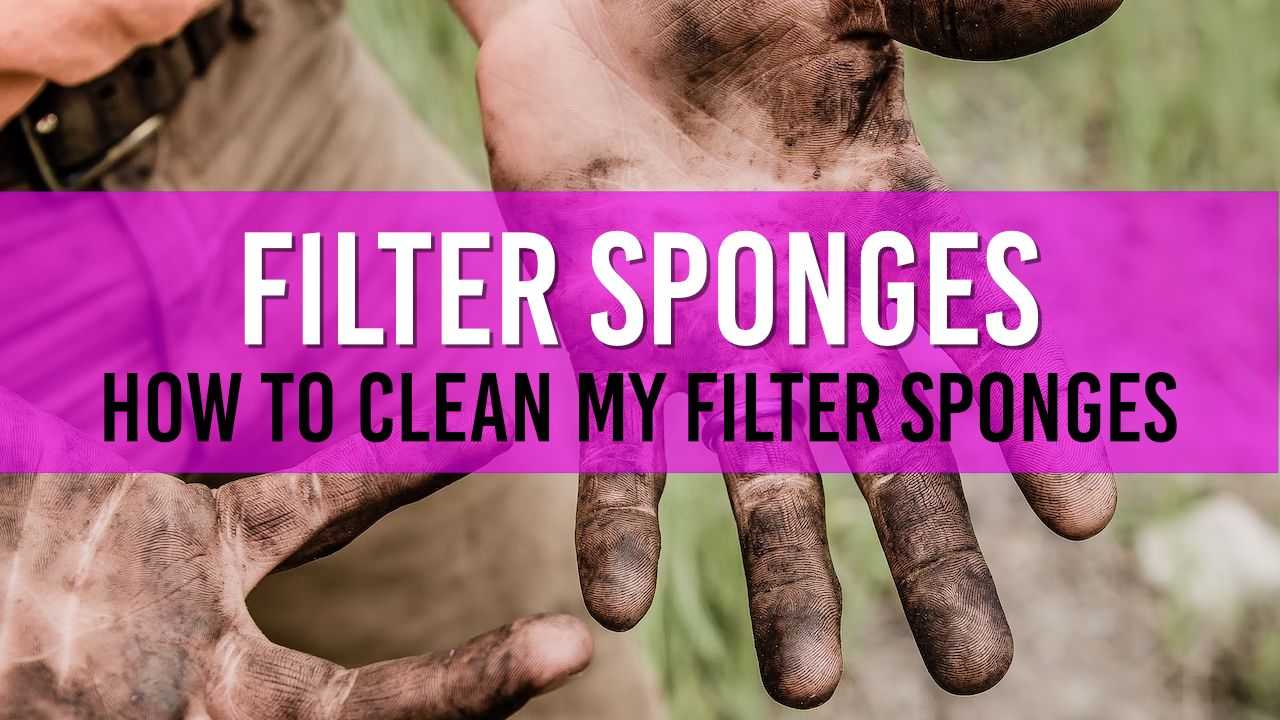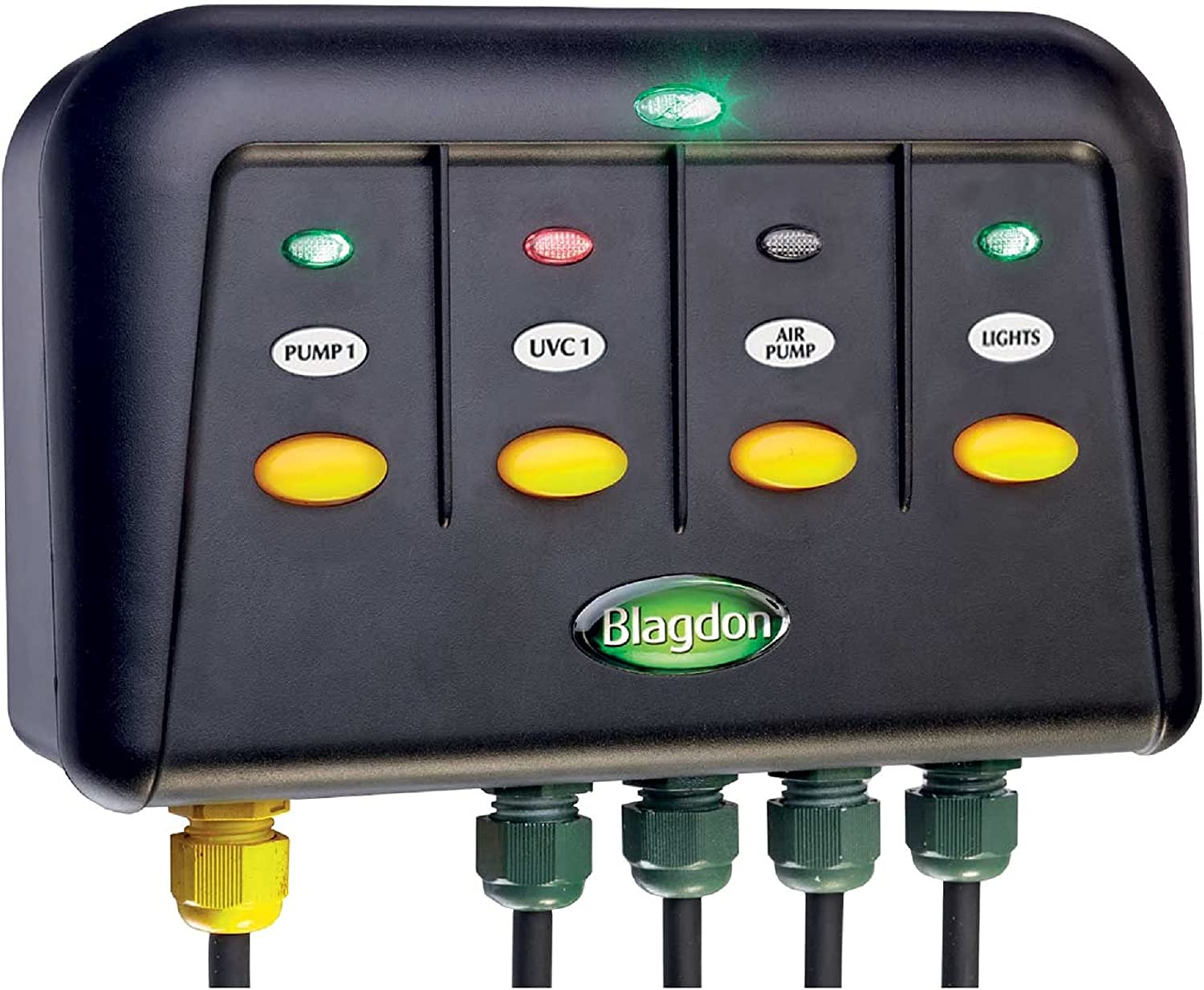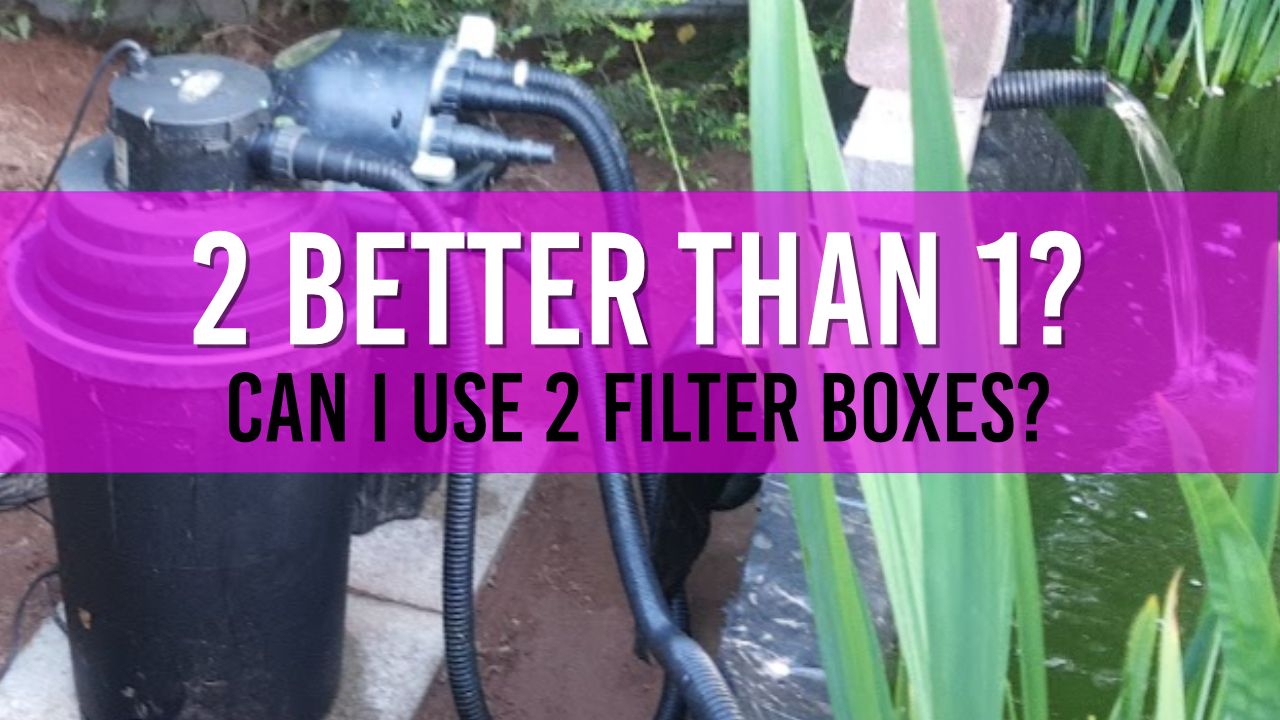Maintaining Pond Filter Sponges: Step-by-Step Cleaning Guide
To clean your Pond Filter sponges you first need to stop your pump and remove the sponges from your filter box. Once removed, use a hose pipe or vacuum to remove any dirt or debris. Full instructions below.

Table of Contents
Cleaning your pond filter sponges often depends on the type of filter box you have. For all pond filters, you will have several layers of sponges with each sponge varying in thickness and size. All pond filter sponges will require a good regular clean & rinse to ensure your pond water remains clear and healthy.
Article Summary
| Category | Details |
|---|---|
| Key Benefits | - Enhances filter efficiency |
| - Prolongs sponge lifespan | |
| - Promotes healthier pond water | |
| - Reduces maintenance costs | |
| Materials Needed | - A bucket of pond water |
| - Soft brush | |
| - Hose (optional for thorough rinsing) | |
| Steps Involved | 1. Remove the sponges from the filter. |
| 2. Fill a bucket with pond water. | |
| 3. Squeeze and agitate the sponges in the bucket gently. | |
| 4. For tougher debris, gently scrub with a soft brush. | |
| 5. If desired, rinse the sponges with a hose for a final clean. | |
| 6. Reinsert the sponges into the filter. | |
| Additional Tips | - Always use pond water to avoid killing beneficial bacteria. |
| - Clean sponges regularly, depending on pond's debris level. | |
| - Replace sponges when they become too worn or damaged. | |
| Estimated Time | 15-20 minutes |
I've updated the article with some helpful Frequently Asked Questions at the bottom based on your feedback.
If you feel I've missed a question, please let me know!

Pond filter sponges are usually a foam material which allows water to flow freely through whilst capturing small pieces of debris / dirt. Over time pond filter sponges start to become clogged (this is good – it means your filtration system is working!) and will eventually reduce the flow of water cycling your pond down to a mere dribble.
If you notice that your pond filter return pipe is not pumping the usual amount of water, it’s time to begin the cleaning process.
How do I clean my pond filters?

Cleaning your pond filters will take some time, so allow at least an hour of your time – so please allow for this.
- Turn off Pond Pump & UV Light
- Remove filter sponges from your filter box
- Clean each filter sponge
- Clean out Filter Sludge
- Replace filter sponges
- Turn on Pond Pump
Turning off your Pond Pump & UV Lamp
In order to start the process of cleaning your pond filter sponges, you must turn off the power to your pond pump. This prevents any water entering your filter box whilst you start the cleaning process – this is especially important on pressurised pond filter boxes.
To ensure you do not burn out your UV bulb, you should also turn the power off to your UV lamp before you start to dismantle your pond filter – this is because UV lamps reach temperatures of 50c and are cooled by the flowing of water – so when your pond pump is switched off the bulb will overheat and burn out.

External Power Switch for Ponds
If you are not using an external power switch box like the above for your pond, I highly recommend installing one.
They are perfect for pond owners and enables you to turn off individual items making pond maintenance an absolute breeze!
Remove Filter Sponges from your Filter Box
Removing the filters from your filter box is very easy. Unclip the lid of your filter box and remove one filter sponge at a time ready for cleaning. The filter sponges will often be very muddy so wearing suitable clothing is a must.
Pressurised pond filter sponges look like giant polo mints, whilst gravity fed filter sponges are somewhat thinner and are much longer & wider.
Clean each of the Filter Sponges
The overall aim is to ensure the filter sponge is as clean as possible, and every pond owner has their own preferred method of doing so. Personally, I use a mix of hose pipe and pond vac. The hosepipe to remove the majority of sludge, with the pond vac to suck it even cleaner.
Clean your pond filter sponge with a hose pipe
Once you have removed a filter sponge, place it on some grass or over a drain and then using a hose pipe spray the sponge until the water runs clear. Keep squeezing the sponge (I often find standing on the filter with my foot to squeeze the dirty water out helps a lot!) until the majority of the dirt has been removed.
Using a wet / pond vac to clean your filter sponges

Pond Vac
Using a Pond Vac can speed up the cleaning of your filter sponges as the dirt is sucked from the small pockets in the sponge.
If you’re lucky enough to have a wet vac, cleaning your filters in an absolute breeze. Using the nozzle on your wet vac (often called Pond Vacs), you can suck all the dirt just like you would with a normal vacuum cleaner.
Cleaning and Removing Filter Sludge
If you’ve neglected your pond filter for quite some time there is a very large chance that your filter box sponges has accumulated a fair bit of pond sludge. This thick mud layer will usually smell pretty bad and ideally needs to be removed.
Removal varies from filter to filter and where your filter box is situated. For me, I have 2 x Pressurised pond filter boxes, so once the lid is off, I can tip the water away and carry the filter box to a drain where I clean it with a hose pipe.
For gravity-fed pond filter boxes (the large rectangular boxes), it can be a little more tricky. Remove all the filter sponges, and then keep filling up with the hose pipe – and scooping it out with a small jar – just repeat until the sludge has gone.
You should try not to wash this media too much as you would end up removing the healthy bacteria. If the filter media / bio balls are completely covered in sludge, I always fully clean them before placing back into my filter box.
Replace your Pond Filter Sponges
Replacing your pond filter sponges should be the complete reverse of removing them. You must always ensure that the filter sponges are fitted in the same order they came out – this ensures their optimal performance.
Once all your filter sponges are replaced, re-connect the lid and any clips ensuring the lid fit is tight. If you find that the lid of your filter box struggles to close, it’s more than likely that your filter media needs re-arranging.
For those of you that have a pressurised filter box, you will know my pain in ensuring the filter media is arranged correctly for the filter box lid to attach nicely 💀
Consider buying a Spare Set of Filter Sponges
If you’re looking to speed up the whole process of replacing your pond filter sponges, then why not look at buying a spare set of sponges. Identify which type of sponges you currently have, then replace the old sponges with the spare set. Once the pond is up and running you can start to clean your dirty pond sponges at your own leisure.
If you’re wanting to be incredibly lazy, you can leave your dirty pond filter sponges laid out on the floor in direct sunlight.
Once the sponges are completely dry, you just shake the dried sludge and vacuum ready for the next quick filter sponge change 😉
What happens if you don't clean your Pond Filter Sponges?

Cleaning your pond filter sponges should be performed on a monthly basis to ensure your pond water is clear and healthy. Many pond users will not clean their pond filters and therefore will struggle to maintain a crystal clear pond (or healthy fish).
Frequently Asked Questions
Updated for April 2023, I've added a selection of Frequently Asked Questions as a quick reference to help you with your Pond Filter maintenance.
How often should I clean my pond filter sponges?
Regular maintenance is crucial for the health of your pond. It is recommended to clean your pond filter sponges every 2 to 4 weeks, depending on the size of your pond and the amount of debris it accumulates. However, it's essential to monitor the water quality and adjust the cleaning frequency accordingly.
What are the signs that my pond filter sponges need cleaning?
Some signs that your pond filter sponges need cleaning include:
- Reduced water flow from the filter
- Excess debris build-up in the pond
- Cloudy or discoloured water
- Unpleasant odours
If you notice any of these signs, it's time to clean your pond filter sponges. Learn more about the reasons behind dirty pond water here.
What is the proper method to clean pond filter sponges?
To clean your pond filter sponges, follow these steps:
- Turn off the pond pump and remove the filter unit from the pond.
- Carefully take out the filter sponges.
- Rinse the sponges thoroughly in a bucket of pond water to preserve beneficial bacteria. Avoid using tap water, as it may contain chlorine that can harm the pond's ecosystem.
- Inspect the sponges for damage and replace them if necessary.
- Reassemble the filter unit and place it back in the pond.
- Turn the pond pump back on.
When should I replace my pond filter sponges?
Pond filter sponges should be replaced when they are damaged, excessively worn, or no longer effectively filtering debris. Regularly inspect your sponges during cleaning to determine if they need replacement.
High-quality filter sponges typically last between 3 to 6 years with proper maintenance - however, I am the first to admit, the sponges in both my filter boxes are much older than that.
What other pond equipment should I maintain along with my pond filter sponges?
In addition to cleaning your pond filter sponges, it's essential to maintain other pond equipment, such as:
- Pond pumps: Regularly clean and inspect your pond pump to ensure optimal performance.
- Skimmers: If your pond has a skimmer, clean and inspect it as well. Learn more about pond skimmers and their benefits here.
- UV clarifiers: Clean the quartz sleeve and replace the UV bulb according to the manufacturer's recommendations.
- Aeration systems: Clean the air stones and check for any damage or wear on the tubing.
Explore more information on pond filters and their maintenance here.
How can I prevent debris build-up in my pond and reduce the frequency of filter sponge cleaning?
There are several ways to prevent debris build-up in your pond and reduce the frequency of cleaning your pond filter sponges:
- Install a pond skimmer to remove floating debris before it sinks to the bottom.
- Regularly remove any fallen leaves, twigs, or other debris using a pond net.
- Trim back overhanging plants and trees around your pond.
- Limit the amount of fish food and ensure you're not overfeeding your fish.
- Introduce aquatic plants that will help absorb excess nutrients and provide a natural filter.
Can I use more than one type of filter in my pond?
Yes, it is possible to use more than one type of filter in your pond. Combining mechanical and biological filtration can help improve water quality and reduce maintenance.
Mechanical filters, like filter sponges, remove solid debris, while biological filters promote beneficial bacteria growth, which breaks down harmful substances in the water.
It's still going strong and I feel helps keep my water incredibly clear!

Do I need to clean my pond filter sponges more frequently during summer?

Pond filter sponges may require more frequent cleaning during the spring and fall, as these seasons often see increased debris due to plant growth and leaves falling into the pond.
Cleaning may be necessary more often in the summer if you have increased algae growth or higher fish activity.
Are there any precautions I should take while handling pond filter sponges?
When handling pond filter sponges, consider:
- Wear gloves to protect your hands from potential contaminants and bacteria.
- Avoid using any chemicals or detergents on the sponges, as they can harm your pond's ecosystem.
- Be gentle while rinsing and handling the sponges to avoid damaging them.
How can I choose the right pond filter sponges for my pond?
Selecting the right pond filter sponges depends on the size of your pond, the type of filter system you have, and the amount of debris typically found in your pond. Consider the following when choosing filter sponges:
- Compatibility with your existing filter system
- The sponge's pore size: coarser sponges for larger debris and finer sponges for smaller particles
- The sponge's durability and lifespan
Consult your filter system's manufacturer for recommendations on suitable filter sponges for your specific pond setup.
Can I use household sponges as a substitute for pond filter sponges?
Using household sponges as a substitute for pond filter sponges is not recommended. Household sponges do not provide the same level of filtration, can degrade quickly, and may release harmful chemicals into the pond.
It's best to use sponges specifically designed for pond filtration, which are made from materials safe for aquatic environments.
How can I tell if my pond filter system is working efficiently?

To determine if your pond filter system is working efficiently, monitor the following aspects:
- Water clarity: The water should be clear and free of debris, indicating effective filtration.
- Water quality: Regularly test the water for parameters such as ammonia, nitrite, nitrate, and pH levels to ensure a healthy pond environment.
- Fish and plant health: Healthy fish and plants are signs of a well-functioning filtration system.
If you notice any issues with water clarity, quality, or the health of your pond's inhabitants, it may be time to inspect and clean your pond filter sponges and other equipment.
Can I add beneficial bacteria to my pond filter sponges to improve water quality?
Yes, adding beneficial bacteria to your pond filter sponges can help improve water quality by breaking down harmful substances like ammonia and nitrite.
You can purchase beneficial bacteria products specifically formulated for ponds at most aquatic supply stores. Follow the manufacturer's instructions for application and dosage, so knowing the volume of water in your pond is a must (Use my free pond water volume calculator).
How do I know when it's time to upgrade my pond filter system?
It may be time to upgrade your pond filter system if you experience any of the following issues:
- Persistent water quality problems despite regular maintenance
- Inadequate filtration capacity for the size of your pond or the number of fish
- Frequent breakdowns or malfunctions of your existing pond filter system
What should I do with the waste material removed from my pond filter sponges?
The waste material removed from your pond filter sponges can be composted or used as garden fertilizer, as it contains nutrients beneficial to plants.
However, it's essential to ensure that the waste material does not contain any harmful chemicals or substances that could harm your plants.
Save Money by Cleaning your Pond Filter Sponges
I remember a time when I visited my sister-in-law. We sat in her garden and they talked to me about how their “pond had stopped”. I walked on over and saw not only dirty water, but the pond pump was completely encapsulated in blanket weed.
Rather than sitting drinking a G&T, I asked if I could get my hands dirty and clean it for them – which they quite happily obliged.
I removed the filter box cover and inside was filled with pond sludge. The pipes were blocked and required HOT water to fully clean them out. After cleaning the pond pump I asked them to turn the electric back on for the pond pump… we waited… nothing.
It turns out that they had left the pond pump plugged into the electric and due to the blockage had eventually burnt out rendering it completely useless.
A new pond pump isn’t really that much, but it’s still a cost that could have been completely avoided had they cleaned their filters prior to it becoming completely blocked.


